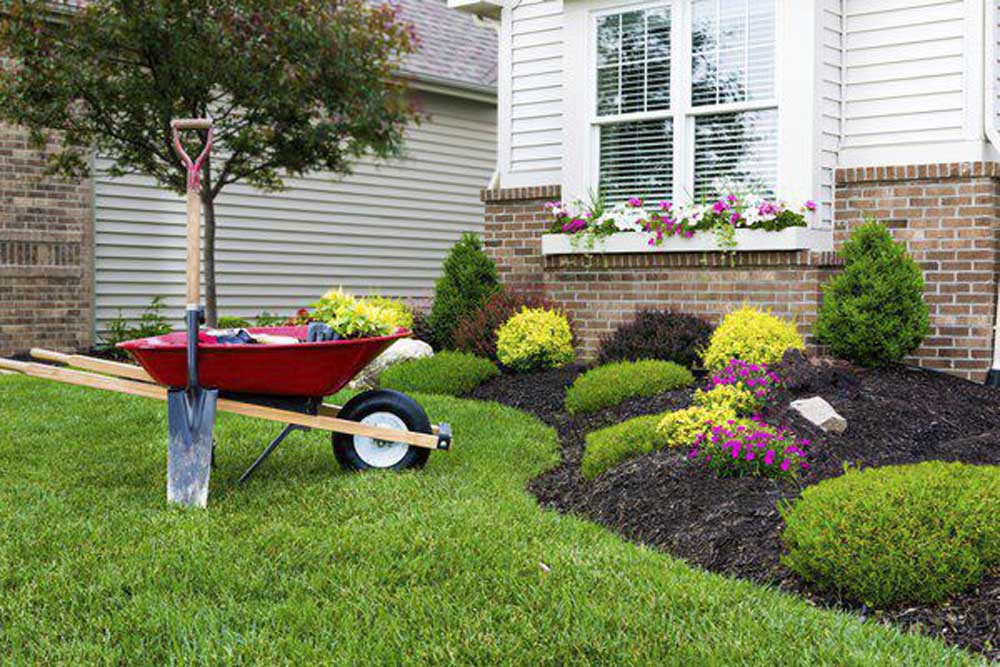Growings On: Landscape resolutions
Published 4:00 pm Tuesday, December 31, 2019

- Contributed photoStart planning now to create the landscaped lawn you desire.
Each New Year provides an opportunity to consider what transpired during the preceding year and puzzle about what might be done differently. Our intentions generally reflect a desire to improve our lives and those around us. Often, that involves the stewardship of resources such as time and/or finances.
Agricultural producers using a holistic management paradigm often speak of the “triple bottom line” as they anticipate the outcome of management decisions. Decisions that potentially harm the environment, finances or the community are avoided. Alternatives that have a greater probability of positive outcomes are pursued. Homeowners making decisions about the landscapes they care for might benefit from the same paradigm.
Trending
Consider these suggestions about landscape management that may 1. Benefit, or at least not harm the environment, 2. Save time and/or money and 3. Benefit communities close-by and those more remote.
• Develop a plan. Farmers know that timing is critical in plant husbandry. Planting too early or too late may lead to greater competition from weeds or poor plant development. Ultimately, reduced yields will also reduce revenue. While homeowners may not be concerned with harvesting a crop, timing is equally critical with lawn and ornamental care. Calendars are available from University of Georgia Extension that provide guidance about when landscape tasks should occur.
Having dates in mind and remaining flexible will aid in getting the timing “just right.” A “one-size-fits-all” recipe doesn’t exist, so develop a plan that is appropriate for the plants you are managing. In addition to getting things done on time, a planning calendar can become an invaluable record about responses to management that can enhance the success of future plans.
A plan for the space you manage can also be helpful. Start with an idea of what you’d like your landscape to look like and provide five years from now and then begin to consider what plants might meet those objectives. A long-term plan might help relieve the pressure that everything must be accomplished immediately. Selecting plants that will accomplish your objectives also involves budgeting for their purchase and anticipating maintenance costs that will be required. It’s advisable to select plants that are best adapted to your climate and landscape conditions, such as soil, slope and drainage. Consider selecting native plants that provide beneficial habitat and minimize required inputs (both labor and money).
• Use water carefully. Water is becoming an increasingly precious resource and careful stewardship is a responsibility as well as a privilege. Watering when soil is already moist is clearly poor management. Plants in the home landscape will benefit from being watered deeply and infrequently rather than frequent, shallow irrigation. This pattern stimulates development of deep roots, allowing plants to harvest moisture from lower soil depths — reducing the need for irrigation. Native plants are often more drought tolerant, requiring less supplemental water.
• Use fertilizer only as needed. Nitrogen, phosphorous and potassium are the key components of lawn fertilizer. If applied in excess of what the plants can utilize, nutrients move away in surface runoff or are leached into groundwater. According to the Environmental Protection Agency’s New England Regional Laboratory, 40 to 60% of the nitrogen that people put on their lawns through fertilizer winds up in “surface and groundwater.”
Trending
Researchers at Vanderbilt University and at the University of Minnesota reached similar conclusions about how fertilizer applications are made by homeowners. In both studies, perceived expectations of neighbors were highly influential in how much and how often fertilizer applications were made. Individual decisions that lead to excess nutrient application may seem minor. However, residential lawns in the U.S. make up somewhere between 30 and 40 million acres. Small application errors, multiplied over such a large area, constitutes a major source of pollution. Agricultural fertilization is often identified as a culprit in nutrient accumulation, but the aggregate overuse on urban and suburban landscapes is also responsible.
• Use pesticides appropriately. As is the case with fertilizer, use of pesticides by individuals may not seem like much of an issue, but in aggregate, application errors multiply. Pesticides, including insecticides, herbicide and fungicides, should only be used when needed and should be based on precise identification of the pest. Recommendations for both rate and timing must be followed. U.S. Environmental Protection Agency estimates that pesticides are used on homeowner properties at rates 10 times greater than on agricultural fields.
Plant growth is slow when temperatures are cold. Take time to reflect, plan and resolve to use resources carefully and appropriately on your home landscape.
Roger Gates is the agricultural and natural resources agent for University of Georgia Extension, Whitfield County. Contact him at roger.gates@uga.edu.




